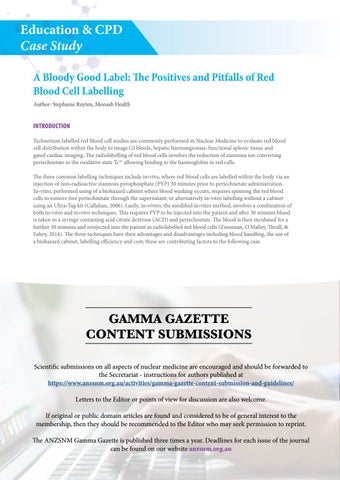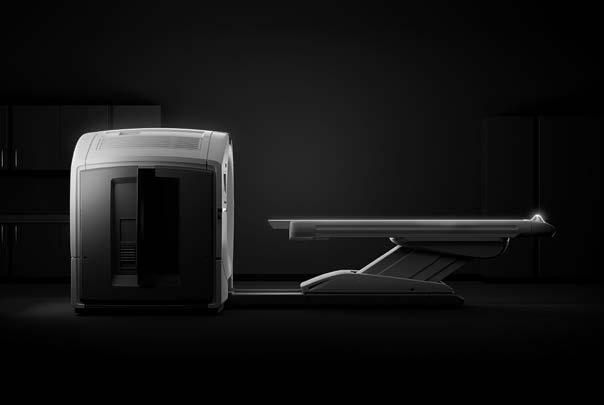Education & CPD Case Study A Bloody Good Label: The Positives and Pitfalls of Red Blood Cell Labelling Author: Stephanie Ruyten, Monash Health
INTRODUCTION Technetium labelled red blood cell studies are commonly performed in Nuclear Medicine to evaluate red blood cell distribution within the body to image GI bleeds, hepatic haemangiomas, functional splenic tissue and gated cardiac imaging. The radiolabelling of red blood cells involves the reduction of stannous ion converting pertechnetate to the oxidative state Tc4+ allowing binding to the haemoglobin in red cells. The three common labelling techniques include in-vivo, where red blood cells are labelled within the body via an injection of non-radioactive stannous pyrophosphate (PYP) 30 minutes prior to pertechnetate administration. In-vitro, performed using of a biohazard cabinet where blood washing occurs, requires spinning the red blood cells to remove free pertechnetate through the supernatant; or alternatively in-vitro labelling without a cabinet using an Ultra-Tag kit (Callahan, 2006). Lastly, in-vivtro, the modified in-vitro method, involves a combination of both in-vitro and in-vivo techniques. This requires PYP to be injected into the patient and after 30 minutes blood is taken in a syringe containing acid citrate dextrose (ACD) and pertechnetate. The blood is then incubated for a further 30 minutes and reinjected into the patient as radiolabelled red blood cells (Ziessman, O'Malley, Thrall, & Fahey, 2014). The three techniques have their advantages and disadvantages including blood handling, the use of a biohazard cabinet, labelling efficiency and cost; these are contributing factors to the following case.
GAMMA GAZETTE CONTENT SUBMISSIONS Scientific submissions on all aspects of nuclear medicine are encouraged and should be forwarded to the Secretariat - instructions for authors published at https://www.anzsnm.org.au/activities/gamma-gazette-content-submission-and-guidelines/ Letters to the Editor or points of view for discussion are also welcome. If original or public domain articles are found and considered to be of general interest to the membership, then they should be recommended to the Editor who may seek permission to reprint. The ANZSNM Gamma Gazette is published three times a year. Deadlines for each issue of the journal can be found on our website anzsnm.org.au
46
gamma GAZETTE 2020 Winter Edition






